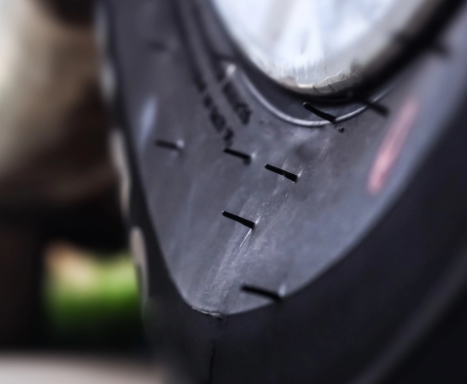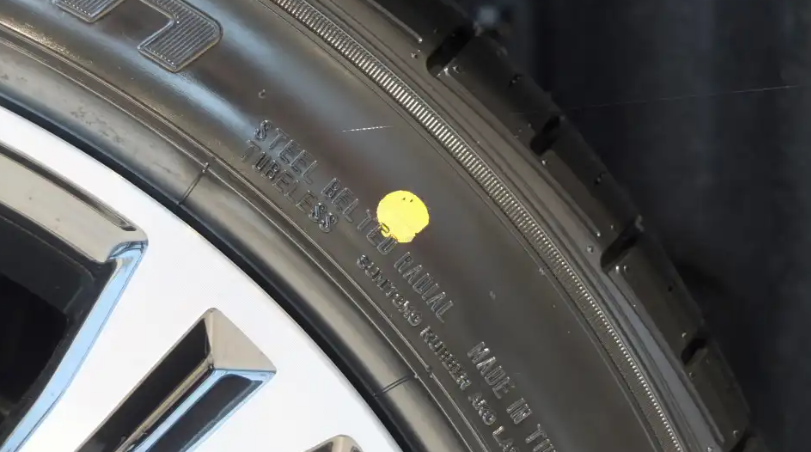They facilitate an important process.
Others are reading now
In tire production, manufacturers must comply with various rules and include several numbers and letters corresponding to the production date, size, or maximum speed. However, a new tire may also have a colored dot, and this exists for a reason.
It can be yellow, red, circular, or even triangular. Whatever its shape or color, this small colored dot on the tire indicates the tire’s balance point or, in other words, the tire’s union point.
Typically, this point is identified so that during mounting, it’s easy to identify the lightest point of the tire which, for balance reasons, should coincide with the valve placement.
Rim manufacturers may also place a balance point on their product. In these cases, both points should coincide during mounting.
Also read
This is to eliminate the need for wheel balancing or to facilitate the balancing work that may sometimes still be necessary.
All of this only applies to the first mounting of the tire or to a new rim.
The correct balance of tires is very important for your vehicle’s operation because it can eliminate possible vibrations that affect driving comfort and cause abnormal and premature tire wear.
On the other hand, imbalance can also make rotation faulty and affect the vehicle’s movement above a certain speed, which can even damage the suspension and shock absorbers.
What are the small ‘rubber hairs’ on the tire?

The colorful dot on tires is not the only ‘mysterious’ thing people have noticed.
Often when buying new tires, whether for cars or bicycles, many will experience small thin strips of rubber hanging along the tire.
Do they have a special function?
The answer is no.
These small hairs, which are technically a byproduct of tire production, have no direct function in terms of tire performance or safety.
They occur during manufacturing, where the tire is shaped using a special mold, layered with rubber and reinforced with metal parts to give the tire its characteristic shape and structure.
During this process, the tire is exposed to both high temperature and pressure, which is essential to ensure the tire’s integrity and performance.
To prevent steam from forming harmful bubbles in the rubber structure during this high-temperature process, the mold is equipped with small ventilation holes. These holes allow excess rubber to escape, resulting in the formation of the small hairs on the tire’s surface.
But what happens if you try to remove these hairs?
According to experts, there’s no reason for concern or to take action. These rubber hairs serve no practical purpose and will naturally wear away after the first few kilometers on the road. Attempts to remove them can actually do more harm than good, especially if it involves sharp objects that could potentially damage the tire’s sidewalls.
So the next time you’re admiring your vehicle’s new tires and wondering about the small hairs, remember that they’re an inevitable part of the tire’s birth.
They are small testimonies to the complex and precise process behind the manufacture of the tires that carry us safely over roads and highways.
Let them be – they’re a sign that your tire is produced with consideration for both performance and safety.


